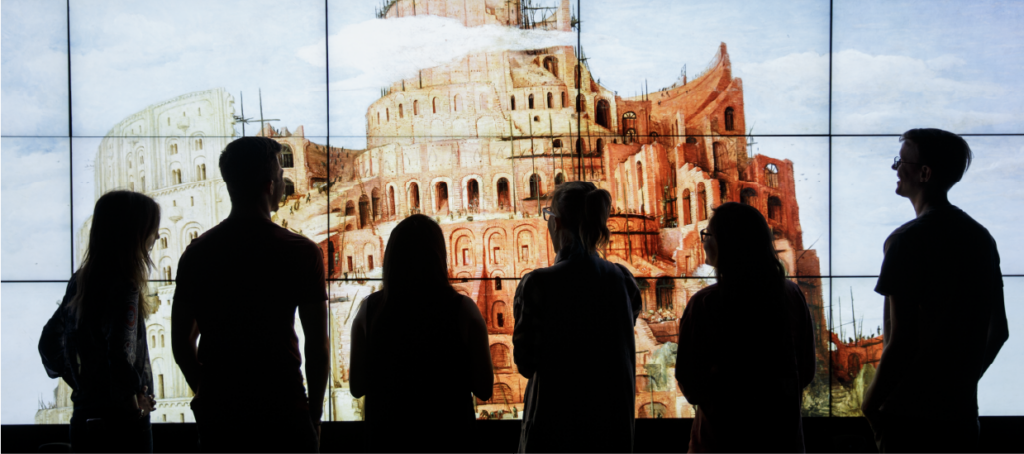Humanities Visualization Space

About
The Humanities Visualization Space (HVS), located in the Liberal Arts & Humanities Building (LAAH), Room 433 at Texas A&M University, supports the research community by providing visualization technologies in an immersive physical space. The room is a "black box" with black carpeting, walls and ceilings. It is modular by design, with rolling, collapsible desks and seating for up to 25 with stackable chairs. The HVS serves TAMU faculty, staff, and students conducting audio-visual research, artistic exhibitions and experiments, demonstrations for groups and courses, and presentations of interactive digital content.
Hardware
The Humanities Visualization Space is powered by:
-
- A 17-foot wide, 6-foot tall projector screen with two 4K UHD projectors (seamlessly edge-blended) to create a 6780 x 2160 resolution display
- A 10.2 surround sound speaker system with Dolby Atmos audio
- RGB LED lighting
- A Windows 11 server with:
- 2 Intel Xeon 6234 processors operating at 3.3 GHz on 16 cores
- NVIDIA Quadro K5000 graphics card
- 256GB of DDR RAM
- SSD RAID configuration
Acknowledgement and Recognition of Support
CoDHR recognizes and thanks the following donors and contributors for their support and continuing commitment in the creation and operation of the Humanities Visualization Space:
-
- College of Arts & Sciences
- Tier-One Program (TOP) Grant: Integration of Multidisciplinary Research and Creative Activities into the Learning Experience
-
- Patrick Burkart, Professor, Department of Communication & Journalism
- Stephen Mark Caffey, Associate Department Head, Department of Architecture
- Philip Galanter, Associate Professor, School of Performance, Visualization & Fine Arts
- Laura Mandell, Professor, Department of English
-
Reserve the HVS
The HVS can be reserved for events (e.g., workshops, guest speakers, and other events utilizing the interactive visualization space), teaching (e.g., special class lectures, class projects, or discussion periods), and research. The room accommodates up to 25 people (but more comfortably fits 20 people or less).
To request to reserve the HVS, please fill out an HVS Reservation Application below. We recommend answering application questions in a Word document or other text editor and saving it for your records before pasting it into our form for submission.
